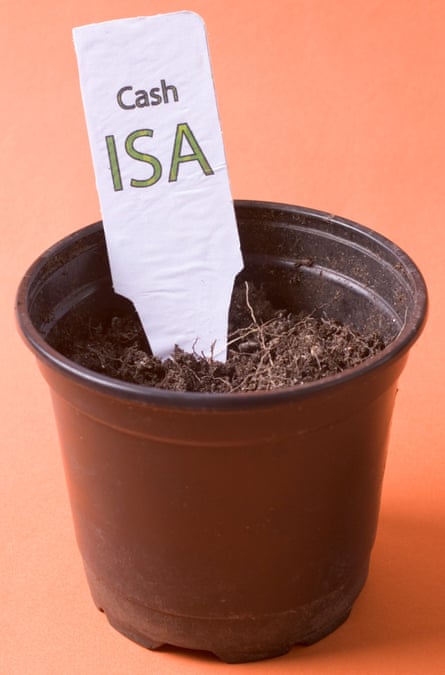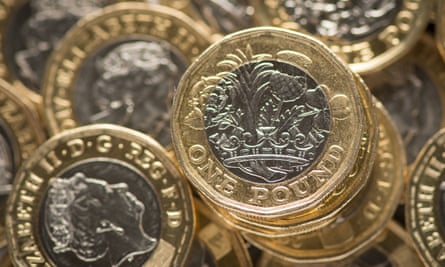Rising interest rates have been good news for savers – but there’s a potential sting in the tail if you have a few thousand pounds tucked away. As Guardian Money warned last week, while until recently few of us needed to worry about breaching the savings tax allowance, there’s now a chance that you could face a bill on your returns.
It all means that suddenly, after several years out of fashion, cash Isas look like a good idea.
There are rumours that the autumn statement on 22 November could bring some changes to the Isa rules but currently the Isa regime lets you put up to £20,000 away each tax year and earn interest without facing any kind of tax bill.
Anna Bowes, a co-founder of the website Savings Champion, says it is definitely time to consider one.
“Isas are a good idea for those who can no longer avoid paying tax on their savings, even though in many cases the rate would appear to be less on the Isa than the equivalent taxable account,” she says.
 View image in fullscreenThere are rumours of changes to the Isa rules in the chancellor’s autumn statement this month. Photograph: Chris Batson/Alamy
View image in fullscreenThere are rumours of changes to the Isa rules in the chancellor’s autumn statement this month. Photograph: Chris Batson/Alamy
In recent years, cash Isas have not been particularly attractive to savers. Figures from HM Revenue and Customs show that 12.2m were paid into in 2008-09 – but the number had fallen to just over 7m in 2021-22, the last year for which data is available.
The number of savers attempting to shield their returns from tax was already falling, probably as a result of low interest rates, even before the introduction of the personal savings allowance in 2016.
This allowance lets basic-rate taxpayers receive up to £1,000 of savings income and higher-rate taxpayers receive up to £500 without any tax being due. This, combined with low interest rates, meant many people felt they did not need to bother with the Isa wrapper.
However, rising interest rates mean that more savers risk breaching the savings allowance and being landed with a tax bill.
Bowes says that in December 2021, just before the Bank of England base rate started its upwards march (we have had 14 base rate increases), the best easy access account available was paying 0.75%. This meant a basic-rate taxpayer needed savings of more than £133,000 to exceed the £1,000 allowance.
But with the top-paying easy access savings account this week paying 5.2%, she says that £19,231 is now enough to breach the allowance.
When you do exceed the allowance, the extra money will be treated as income and taxed at your usual rate, and you may need to declare the money to HMRC.
This means a basic-rate taxpayer will hand over 20%, and a higher-rate payer 40%. It could have a big impact on your expected returns.
Before you dive in and start shopping around for a cash Isa, there are some things to consider.
In addition to the personal savings allowance, there are a couple of other allowances for earning interest before you have to pay tax on it. For example, you can use your personal allowance to earn interest tax-free if you have not used it up on your wages, pension or other income.
If you have a different type of Isa you have paid into this tax year, that will limit what you can put into a cash Isa
You may also get up to £5,000 of interest and not have to pay tax on it. This is your “starting rate for savings”. The more you earn from other income, the lower this will be. You are not eligible for the starting rate for savings if your other income is £17,570 or more.
So if your income apart from your savings interest is less than that, you may not need to do anything.
If you already have a different type of Isa that you have paid into this tax year, that will limit what you can put into a cash Isa. If you have paid anything into a cash Isa this tax year, you cannot open a new one but must either pay into that or transfer it.
Bowes says you should also “take a look at what you would earn after tax on a standard account, compared with the tax-free interest on an Isa”.
At the moment, it seems to make sense to opt for a cash Isa over a standard savings account. Providers have been increasing cash Isa interest rates, and although they tend to be lower than those for non-Isa accounts, your net returns are potentially higher.
Bowes gives the example of a taxable easy access account paying 5.2% gross. That falls to 4.16% after the deduction of basic-rate tax. The top easy access cash Isa, on the other hand, was at the time of writing paying 5.08%. This account is offered by Zopa (although Bowes notes that you cannot transfer old cash Isas held with other providers into this account).
On fixed-rate savings, she highlights how Union Bank of India’s UK arm was paying 6.05% gross for a year, which, after the deduction of 20% tax, was 4.84% net, while one of the best one-year cash Isas, from UBL UK, was at the time of writing paying 5.7%. “On £20,000, that’s a gain of £172,” Bowes says.
Rachel Springall, a finance expert at the financial data provider Moneyfacts, says fixed-rate Isas have been subjected to a few interest rate cuts recently but since the start of November there have also been providers jostling to secure spots at the top of the tables.
“Navigating the best rates is essential for any investor considering a cash Isa as providers continue to adjust their rates,” she adds.
 View image in fullscreenAre you looking for an easy access account or an Isa where you lock your money away for a few years? Photograph: Dominic Lipinski/PA
View image in fullscreenAre you looking for an easy access account or an Isa where you lock your money away for a few years? Photograph: Dominic Lipinski/PA
Best-buy cash Isas
We asked Moneyfacts for some of the current best-buy cash Isas for different balances: £1,000, £5,000, £10,000 and £20,000.
Looking at easy access-style accounts, the Double Access Cash Isa (1st issue) from Mansfield building society topped the table across all the balances, with a rate of 5.5%. However, you have to manage it in branch or through the post, and only two penalty-free withdrawals are allowed per tax year – additional withdrawals are subject to the loss of 90 days’ interest on the amount withdrawn.
For those happy to lock their cash away for 12 months, Virgin Money’s one-year, fixed-rate Cash Isa Exclusive account paying 5.85% was the best across all the balances, although you have to have a Virgin Money, Clydesdale Bank or Yorkshire Bank current account. Meanwhile, United Trust Bank’s Cash Isa 1 Year Bond pays 5.5%, although the minimum deposit is £5,000.
For fixed-rate Isas where you lock away your cash for five years, one of the best across all the balances is the 5 Year Fixed Rate Cash Isa from Secure Trust Bank, which pays 4.95%. The minimum deposit is £1,000.
This article was amended on 12 November 2023. An earlier version said that if you exceeded your personal savings allowance, you should let HMRC know and you would be taxed at your usual rate. In fact, if this happens you will be taxed at your usual rate unless your income from this goes over £10,000 and you do not usually complete a self-assessment form in which case you should contact HMRC.
All rates correct at time of writing



